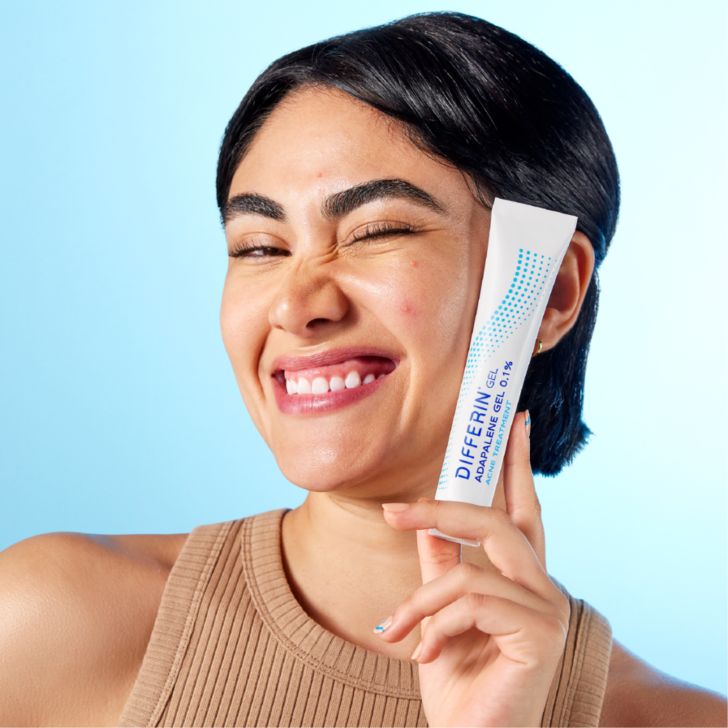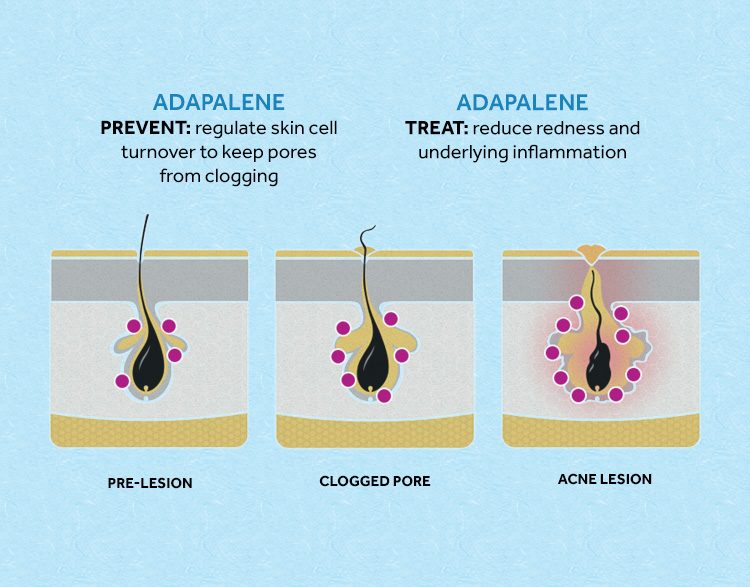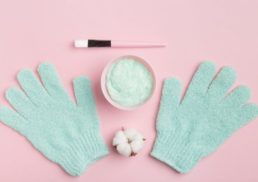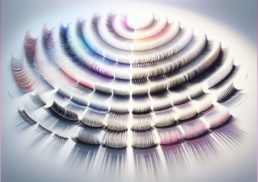Acne is a common skin concern that can be frustrating and persistent. But what if there was a powerful acne-fighting ally that could help you achieve clearer skin without the harsh side effects of other treatments? Enter adapalene gel, a game-changer in acne treatment that combines efficacy with reduced irritation. In this blog post, we’ll explore how adapalene gel works its magic and how to properly use it for optimal results.
Are you ready to discover the secret weapon for effectively treating acne? Let’s dive into the world of adapalene gel, a topical retinoid that has been making waves in the skincare industry. We’ll discuss its unique advantages, proper application techniques, potential side effects, and precautions to ensure that you get the best possible outcome in your fight against acne.
Table of Contents
Key Takeaways
Adapalene gel is an FDA-approved acne treatment that unclogs pores, prevents new acne from forming, and reduces inflammation with a lower risk of irritation than other retinoids.
Retinoids are important in acne treatment. Adapalene provides the same benefits as other topical retinoids but with fewer side effects & more pleasant experience for users.
Proper application & usage instructions should be followed to maximize effectiveness while minimizing potential side effects.
Understanding Adapalene Gel

Adapalene gel, a topical retinoid, is an FDA-approved acne treatment that has been effectively treating acne and restoring skin texture and tone for years. Also known as Differin Gel, this powerful active ingredient works by unclogging pores, preventing new acne from forming, and reducing inflammation.
With a lower risk of irritation compared to other retinoids, adapalene gel has become a popular choice for those seeking a more gentle yet effective acne solution.
The Role of Retinoids in Acne Treatment
Retinoids are well-recognized for their significant contribution to acne treatment. These vitamin A derivatives regulate skin cell turnover and help clear blocked pores, making them an essential tool in the fight against acne. The American Academy of Dermatology (AAD) recommends adapalene, also known as Differin Gel, as a treatment option for acne due to its superior tolerability and effectiveness.
While other topical retinoids like tretinoin can effectively treat acne, they often come with a higher risk of skin irritation. Adapalene gel, on the other hand, offers similar efficacy with milder side effects, making it a more appealing option for those with sensitive skin or those looking to avoid unnecessary skin irritation.
Adapalene vs. Other Topical Retinoids
Adapalene gel, a third-generation synthetic retinoid, distinguishes itself from the rest. Adapalene, despite having the same benefits as other vitamin A-derived topical retinoids used for treating acne, manifests fewer side effects. The secret lies in its unique chemical structure, which leads to reduced acne and skin irritation compared to its counterparts.
As a result of this superior tolerability, adapalene gel provides a more pleasant treatment experience for the user. With the same efficacy as other topical retinoids, adapalene gel has quickly become a popular choice for those seeking a more gentle yet effective acne treatment option.
Learn more, visit Adapalene vs. Tretinoin: How Do They Compare for Wrinkles?
How Adapalene Gel Works

The secret to adapalene gel’s effectiveness lies in its ability to normalize follicular epithelial cell differentiation. This process targets acne deep within the clogged pores and helps to unclog them, preventing new acne from forming.
In addition to this pore-targeting action, adapalene gel also offers anti-inflammatory effects, which can help reduce redness and inflammation associated with acne. By addressing both the root cause of acne and the inflammation that often accompany it, adapalene gel offers a comprehensive approach to acne treatment.
This dual action makes benzoyl peroxide a powerful weapon in the fight against acne, helping to clear existing breakouts and prevent new ones from forming.
Targeting Acne at its Source
Targeting the primary factors fueling acne development is a key strategy for effective treatment. These factors include follicular hyperkeratinization, sebum production by sebaceous glands, and inflammation. Adapalene gel addresses these factors by normalizing the differentiation of follicular epithelial cells, which in turn prevents the formation of microcomedones.
By tackling the root cause of acne, adapalene gel helps to not only clear existing breakouts but also prevent new ones from forming. This proactive approach to acne treatment ensures that your skin stays clear and healthy, putting you on the path to long-term skin improvement.
Anti-inflammatory Properties
Adapalene gel has the following benefits for acne-prone skin:
Pore-targeting action
Anti-inflammatory properties to lessen redness and inflammation
Alleviates discomfort and irritation often associated with breakouts
By reducing both the visible and invisible signs of acne, adapalene gel provides a comprehensive solution for those seeking clearer, healthier skin. With its potent combination of pore-targeting and anti-inflammatory actions, adapalene gel is a powerful tool in the fight against acne and its accompanying symptoms.
Proper Application and Usage
Applying adapalene gel correctly and consistently is vital to fully harness its acne-fighting abilities. This involves preparing your skin, following a specific treatment regimen, and taking necessary precautions such as avoiding use during pregnancy.
By adhering to a proper application and usage routine, you can maximize the benefits of adapalene gel while minimizing the risk of side effects. This will help ensure that your skin stays clear and healthy, allowing you to enjoy the full potential of this powerful acne treatment.
Preparing Your Skin
Preparing your skin through proper cleansing and drying is a necessary step before applying adapalene gel. Start by washing your face with a gentle, soapless cleanser and patting it dry with a soft towel. This will help remove any dirt, oil, or makeup that could interfere with the effectiveness of the medication.
Once your skin is clean and dry, you’re ready to apply the adapalene gel. It’s important to remember that a little goes a long way – a small amount is usually sufficient to cover the entire affected area. Gently massage the gel into your skin, taking care to avoid sensitive areas such as the eyes, lips, and nostrils.
Application Techniques
Applying a thin layer of adapalene gel to the affected area once daily, preferably at night, is recommended for optimal results. Following a regular dose schedule allows the medication to work its magic while you sleep, making it an easy addition to your nighttime skincare routine.
As with any new skincare product, it’s essential to monitor your skin’s response to adapalene gel and adjust the frequency of application if necessary. If you experience excessive dryness or irritation, try reducing the frequency of application or applying an oil-free moisturizer over the treated area.
If you have any concerns about your skin’s reaction to the medication, always consult with your doctor or contact your local poison control center.
Potential Side Effects and Precautions
Despite being generally well tolerated, adapalene gel may cause some potential side effects. These can include dryness, irritation, and photosensitivity. However, by taking proper precautions and following a consistent skincare routine, you can minimize the risk of these side effects and ensure that your skin stays healthy and clear.
It’s essential to be aware of the potential side effects and precautions associated with adapalene gel, so you can take action to prevent or mitigate any issues that may arise. By being proactive and diligent in your skincare routine, you can enjoy the benefits of adapalene gel while minimizing any potential drawbacks.
Managing Dryness and Irritation
Dryness and irritation are among the most common side effects of adapalene gel. To decrease dryness and irritation, try the following:
Use a gentle cleanser to wash your face.
Apply an oil-free moisturizer to soothe and hydrate your skin.
Avoid using harsh or abrasive skincare products.
Protect your skin from excessive sun exposure by wearing sunscreen.
Drink plenty of water to keep your skin hydrated from the inside out.
By following these steps, you can minimize discomfort and promote a healthy, balanced complexion.
If dryness and irritation persist or worsen, consider adjusting the frequency of application or consulting with your doctor. They may recommend a different treatment approach or provide additional guidance on managing these side effects.
Sun Protection and Photosensitivity
To protect your skin while using adapalene gel, follow these steps:
Use a broad-spectrum sunscreen with an SPF of at least 30.
Wear protective clothing, such as hats and long sleeves, when exposed to the sun.
Avoid excessive sun exposure.
By taking these precautions, you can minimize your risk of photosensitivity and keep your skin protected.
By taking these precautions, you can help prevent sunburn, premature aging, and other sun-related skin damage while using adapalene gel. Remember, protecting your skin from the sun is essential not only for maintaining a clear complexion, but also for supporting long-term skin health.
Contraindications and Interactions
Adapalene gel, though effective for many, has situations where its use may either be contraindicated or necessitate caution. These include pregnancy, hypersensitivity to adapalene or its excipients, and certain skin conditions such as eczema or sunburn.
In addition, adapalene gel can potentially interact with other skincare products, making it important to avoid using harsh, irritating, or drying products on the treated area. By being aware of these contraindications and interactions, you can ensure that your adapalene gel treatment is both safe and effective.
When to Avoid Adapalene Gel
There are certain situations in which adapalene gel should be avoided. It’s best to steer clear of this medication if you:
Are pregnant
Have a photosensitive disorder
Have eczema
Have sunburn
Have a known hypersensitivity to adapalene or its excipients.
In these cases, it’s important to consult with your healthcare provider to discuss alternative acne treatments that may be more suitable for your specific needs. By carefully considering your individual circumstances, you can find the best treatment approach for your acne and minimize any potential risks.
Interactions with Other Skincare Products
Awareness of potential interactions with other skincare products is crucial when using adapalene gel. It is important to avoid using harsh or irritating products, such as:
Hair perming solutions
Alcohol
Lime
Menthol
While using adapalene 0.1 gel.
Additionally, if you’re currently using over-the-counter acne medications containing sulfur, resorcinol, or salicylic acid, it’s advised to discontinue their use prior to beginning adapalene therapy. By avoiding these potential interactions, you can help ensure that your adapalene gel treatment is as effective and gentle on your skin as possible.
Monitoring Treatment Progress
Monitoring your progress and adjusting your approach as needed is fundamental with any acne treatment. With adapalene gel, this involves tracking improvement, reassessing efficacy after 12 weeks, and modifying treatment if necessary.
By diligently monitoring your treatment progress, you can ensure that you’re getting the most out of your adapalene gel treatment. This will help you achieve the clear, healthy skin you deserve and maintain those results over the long term.
Tracking Improvement
Closely observing changes in acne severity, skin texture, and tone is key to tracking improvement with adapalene gel. Keep in mind that it may take 8 to 12 weeks for the medication to take effect, so it’s important to be patient and consistent with your treatment.
If you don’t notice any improvement within the specified time frame or if your severe acne worsens, consult with your doctor for further guidance. They may recommend adjusting your treatment plan or exploring alternative options to help you achieve the desired results.
Adjusting Treatment
Seeking medical advice is recommended if you experience severe side effects or lack of improvement after using adapalene gel. Your doctor may suggest increasing or decreasing the frequency of application, or even trying a different treatment approach.
Remember, finding the right acne treatment to target acne can sometimes be a process of trial and error, so don’t be discouraged if you need to make adjustments along the way.
Summary
Adapalene gel has proven to be a powerful and effective acne treatment with milder side effects compared to other topical retinoids. By understanding its unique properties, following proper application techniques, and taking necessary precautions, you can make the most of this innovative acne solution.
Don’t let acne hold you back any longer. With adapalene gel on your side, you can take control of your skin’s health and achieve the clear, radiant complexion you’ve always wanted. It’s time to embrace the power of adapalene gel and conquer acne once and for all.
Frequently Asked Questions
What does adapalene gel do?
Adapalene is a retinoid-like medication used to treat acne, which works by decreasing the formation of microcomedones, stopping pimples from forming under the skin surface, and promoting quick healing of pimples that do form.
Is adapalene stronger than retinol?
Adapalene is more potent than retinol as it contains active retinoic acid, making it stronger and more effective.
Is it OK to use adapalene everyday?
It is generally OK to use adapalene every day, as long as you follow the instructions such as washing your face beforehand and applying the medicine at night.
You should see an improvement within 12 weeks, though it’s important to check with your doctor if you don’t see any changes after 8-12 weeks.
How long does it take for adapalene gel to work?
Adapalene gel usually takes 8-12 weeks to start seeing results, though it can take longer for full improvement to be visible.
It’s important to use the medication regularly and not give up after the first few weeks when your acne might appear worse before improving.
Is adapalene a retinoid?
Adapalene is a retinoid, a vitamin A derivative, which works to promote skin cell turnover and is approved by the FDA for treating acne vulgaris.
It is typically described in terms of generations with increased specificity of retinoic acid receptor (RAR) affinity with later generations.









